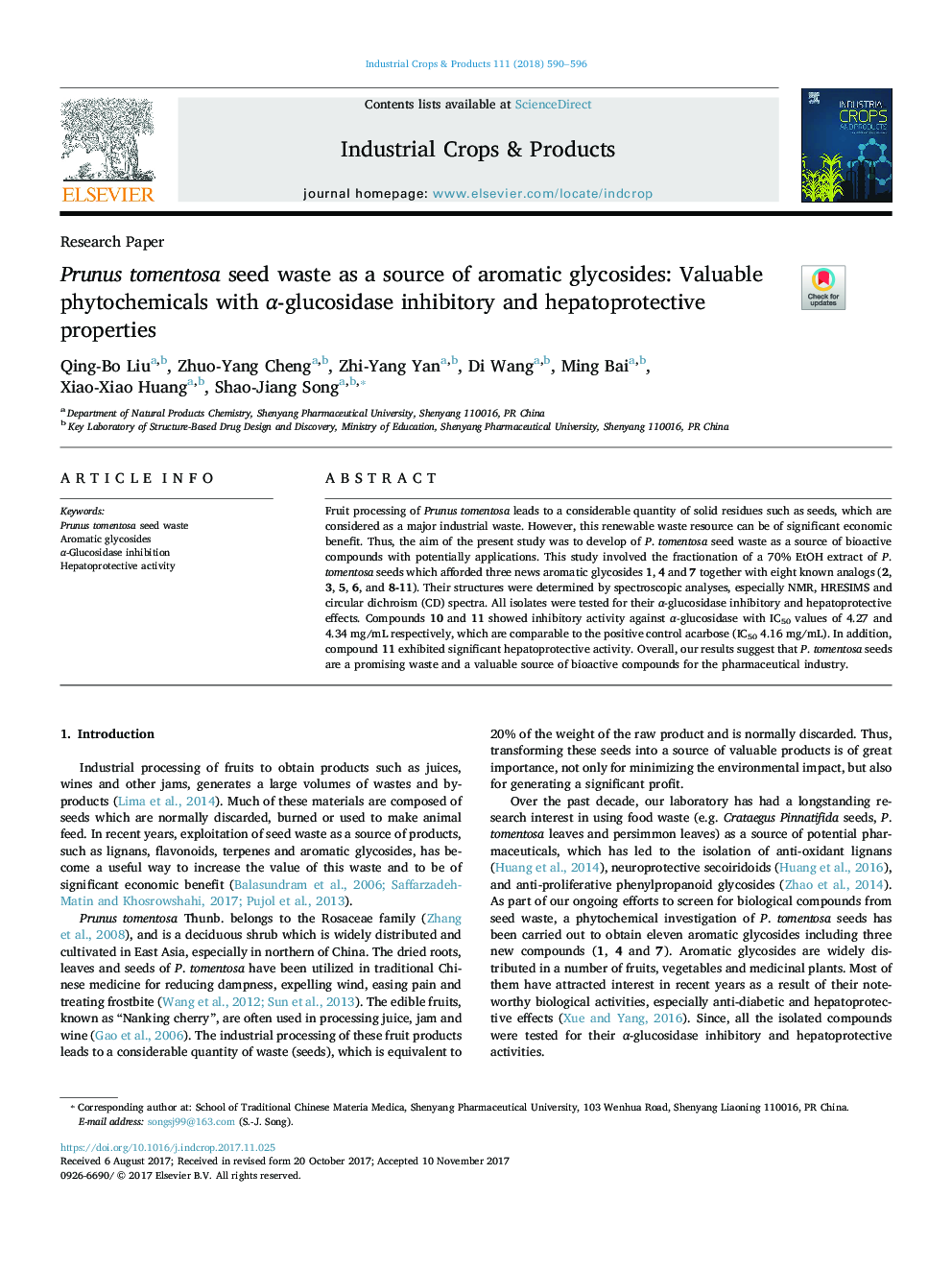| Article ID | Journal | Published Year | Pages | File Type |
|---|---|---|---|---|
| 8880919 | Industrial Crops and Products | 2018 | 7 Pages |
Abstract
Fruit processing of Prunus tomentosa leads to a considerable quantity of solid residues such as seeds, which are considered as a major industrial waste. However, this renewable waste resource can be of significant economic benefit. Thus, the aim of the present study was to develop of P. tomentosa seed waste as a source of bioactive compounds with potentially applications. This study involved the fractionation of a 70% EtOH extract of P. tomentosa seeds which afforded three news aromatic glycosides 1, 4 and 7 together with eight known analogs (2, 3, 5, 6, and 8-11). Their structures were determined by spectroscopic analyses, especially NMR, HRESIMS and circular dichroism (CD) spectra. All isolates were tested for their α-glucosidase inhibitory and hepatoprotective effects. Compounds 10 and 11 showed inhibitory activity against α-glucosidase with IC50 values of 4.27 and 4.34 mg/mL respectively, which are comparable to the positive control acarbose (IC50 4.16 mg/mL). In addition, compound 11 exhibited significant hepatoprotective activity. Overall, our results suggest that P. tomentosa seeds are a promising waste and a valuable source of bioactive compounds for the pharmaceutical industry.
Related Topics
Life Sciences
Agricultural and Biological Sciences
Agronomy and Crop Science
Authors
Qing-Bo Liu, Zhuo-Yang Cheng, Zhi-Yang Yan, Di Wang, Ming Bai, Xiao-Xiao Huang, Shao-Jiang Song,
